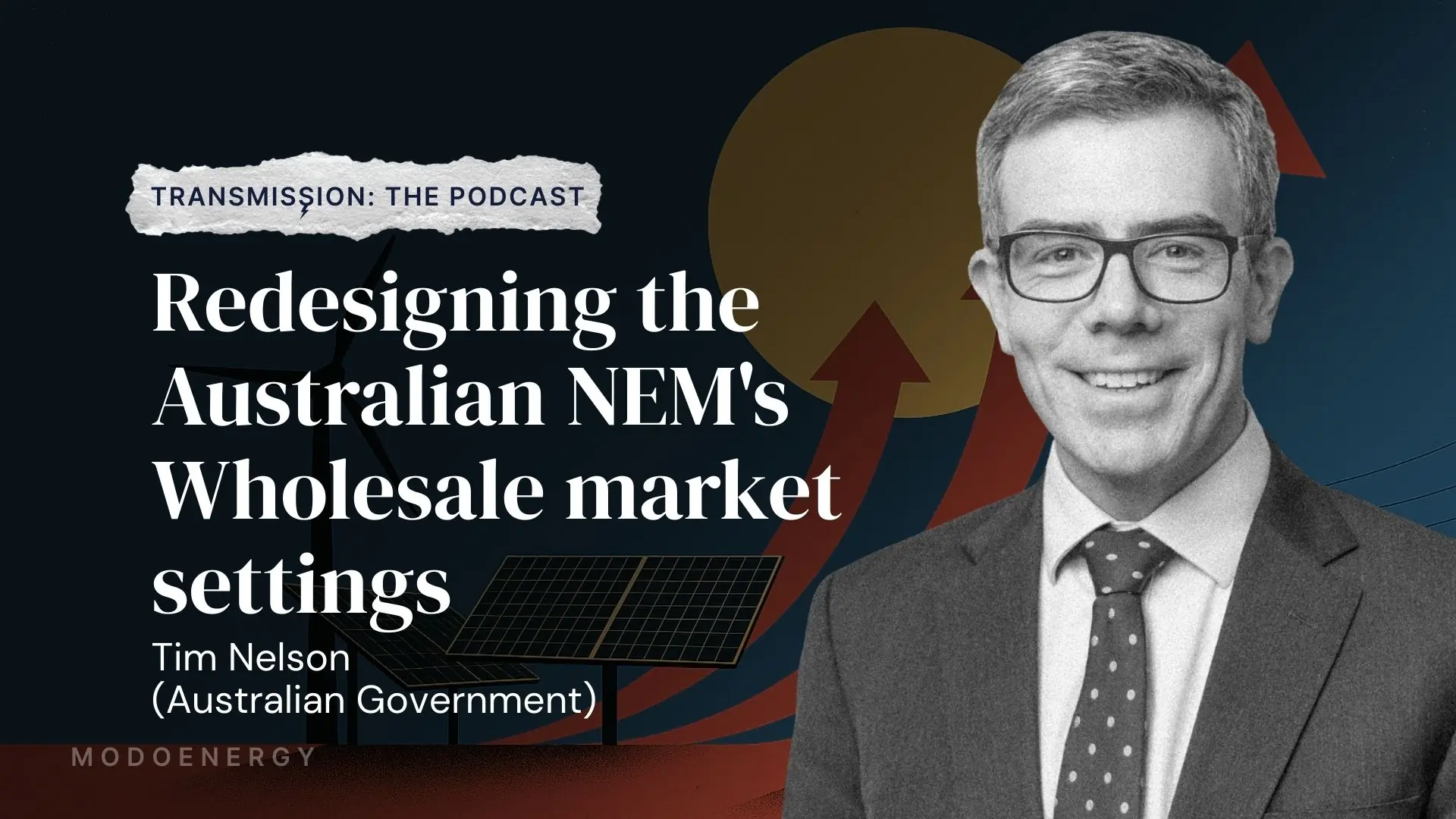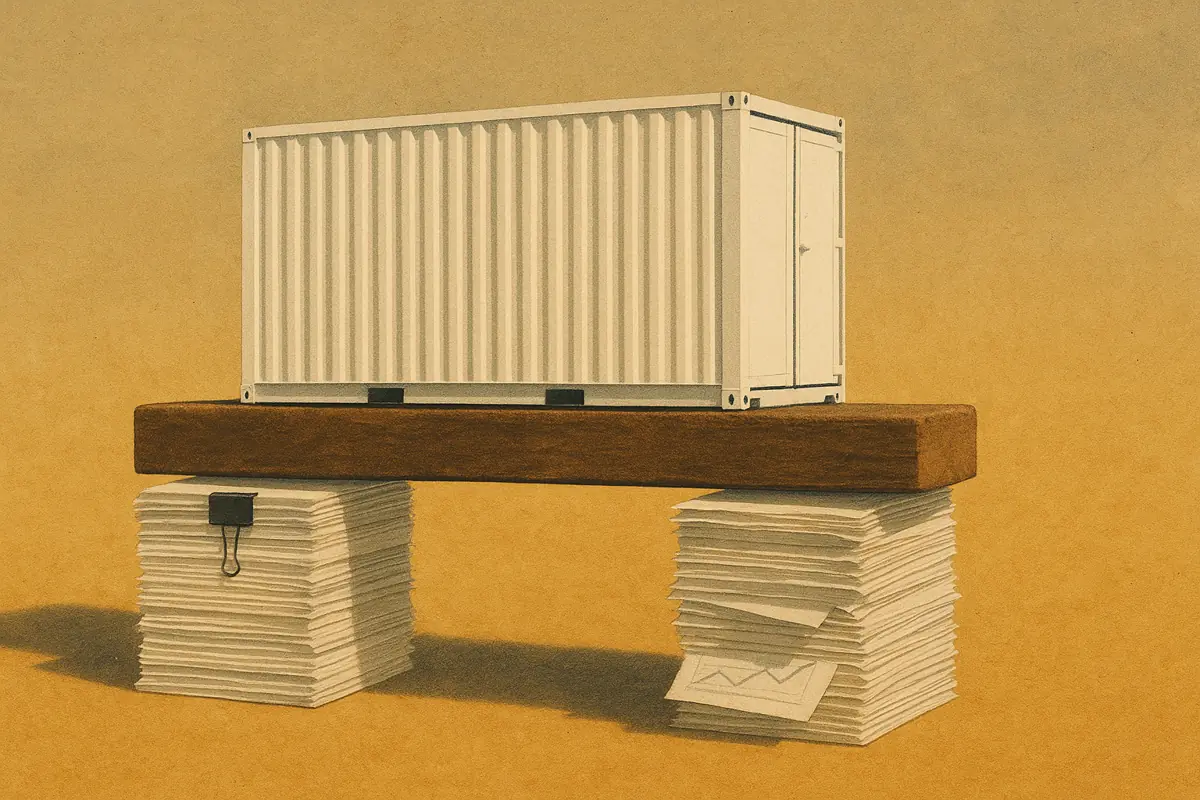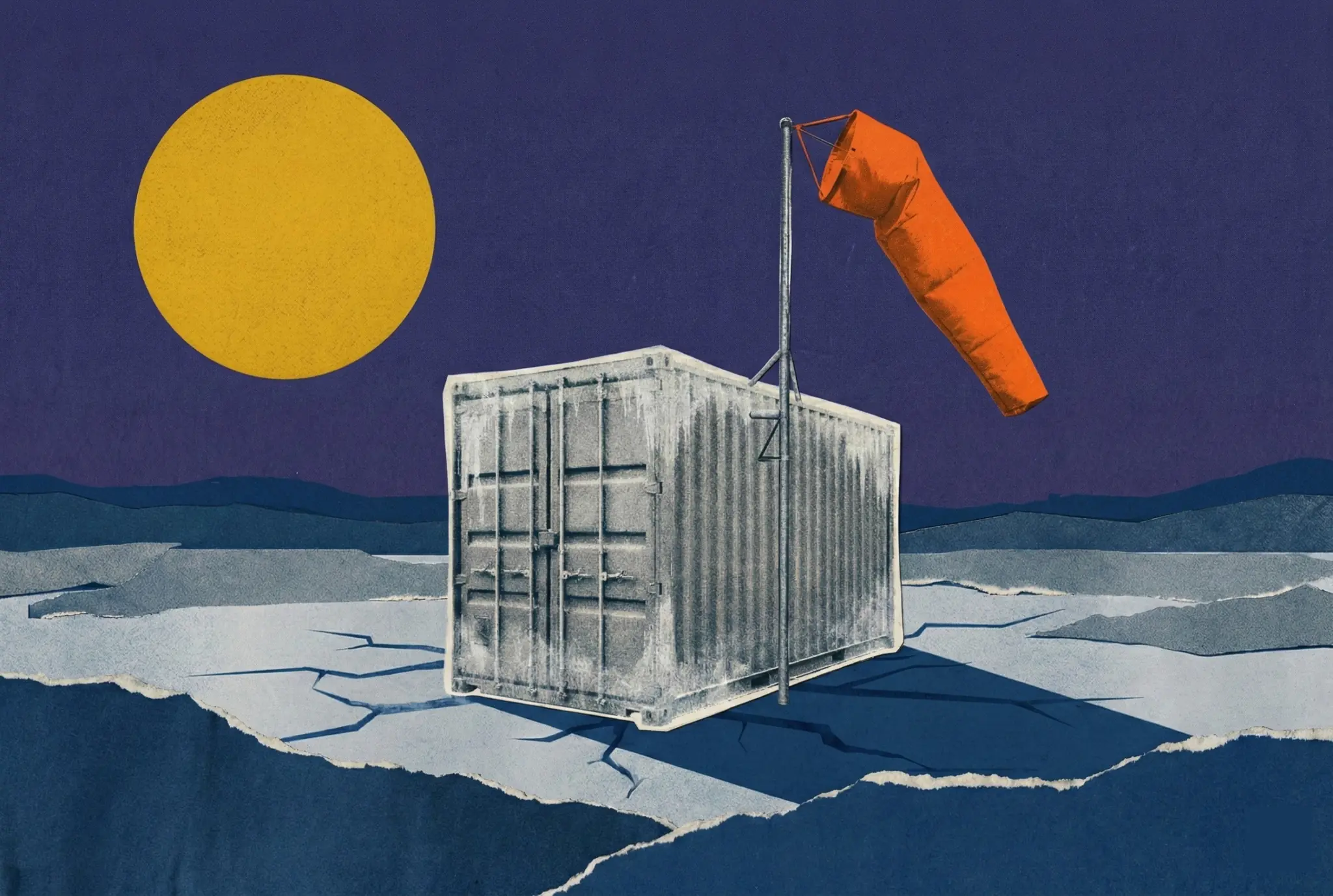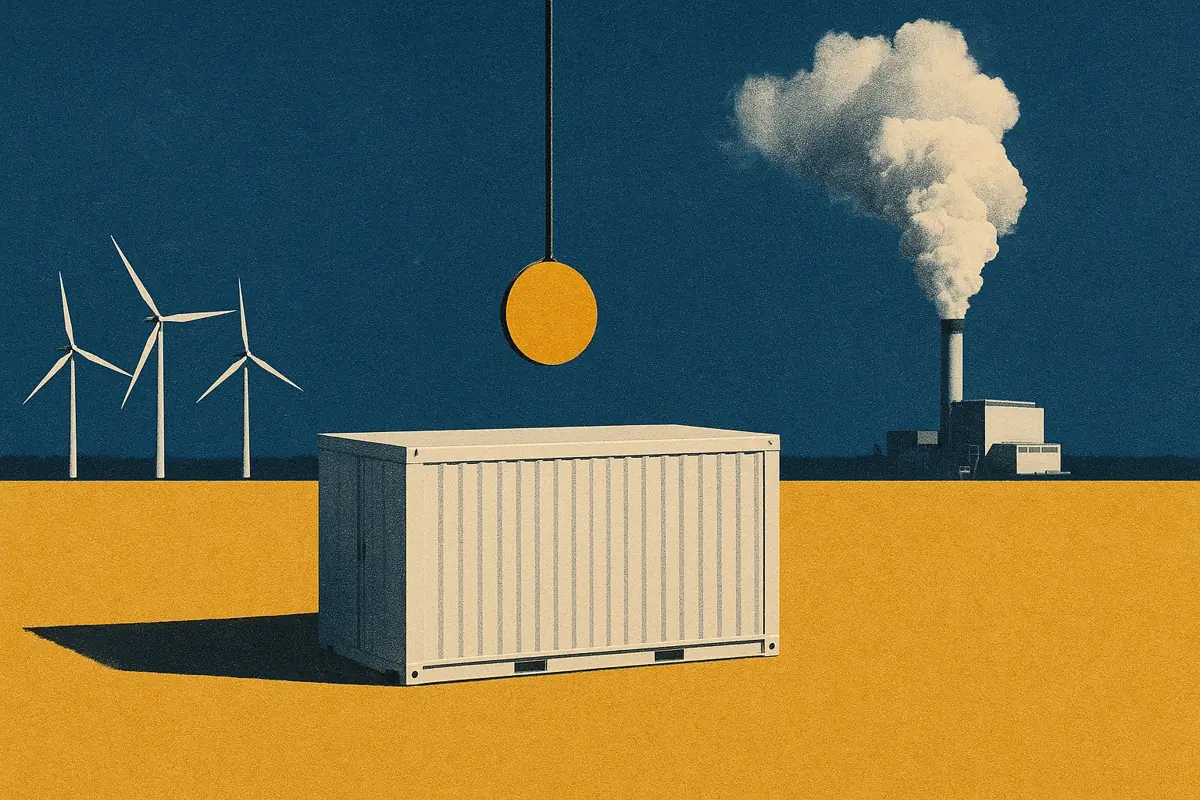Battery development in the Southwest Power Pool (SPP) has been limited to date, despite leading the U.S. in wind penetration. However, the region is poised to see a change in the coming years.
53 GW of battery capacity is in the queue today, and retiring thermal generation, rising demand, and continued renewable growth will drive the need for storage to come online.
Executive Summary
- 10.7 GW of battery storage is expected to reach commercial operation by 2030. This represents just 20% of SPP’s total queued BESS capacity. The projection reflects stage-weighted completion rates and regional development timelines.
- Queued batteries average four hours of duration, reflecting developers’ focus on maximizing revenues in SPP’s bilateral Resource Adequacy market. Four-hour assets are best aligned with evening peak coverage and accreditation rules.
- SPP’s interconnection queue exceeds 150 GW of total generation capacity. The operator now runs an annual Cluster Study cycle and a streamlined Surplus Interconnection process that enables faster approvals for hybrid and co-located projects.
- Storage growth is driven by retiring thermal capacity (3.6 GW by 2030), rising peak demand (+14% by 2030), and high renewable penetration. Wind already provides around 40% of annual generation, and large-scale solar additions are accelerating.
Batteries, solar, and wind dominate the SPP interconnection queue
The latest SPP interconnection data shows developers are overwhelmingly focusing on renewables and storage. This reveals how quickly the region’s generation mix is shifting toward flexibility and clean capacity.
Renewables drive the queue, with solar and wind together making up nearly half of all queued capacity, with more than 75 GW tentatively scheduled to reach commercial operations by 2030.
Batteries follow, with over 50 GW of BESS capacity queued across SPP. Standalone projects lead early years, but co-located projects combining solar or wind with storage - listed as “hybrids” in SPP’s queue, though not necessarily DC-coupled - are projected to rise sharply after 2027.
Thermal projects make up less than one quarter of SPP’s queued capacity. This is a clear sign that developers are prioritizing renewables and storage. The shift reflects both higher capital costs and longer development timelines - including longer procurement lead times - for new thermal generation. This helps clean energy projects be more competitive in today’s market.
Only 300 MW of batteries are operating, but the interconnection queue exceeds 50 GW
SPP’s BESS buildout concentrates toward the late 2020s, with 2028 and 2029 marking the highest buildout years. Of the total queued capacity, 60% of projects are labeled as standalone BESS. Meanwhile, 39% are hybrids paired with solar, and 1% hybrids paired with wind.
SPP’s Surplus Cluster allows developers to reuse existing interconnection capacity by adding new generation or storage to existing wind or solar sites. The program was introduced to make better use of underutilized grid capacity at existing points of interconnection. This reduces study times and costs for projects that can share infrastructure.
Around 3.3 GW of planned storage tagged as standalone sit within this cluster. Adjusting for these surplus projects, the true standalone share of SPP’s BESS queue falls to roughly 54%.
This highlights a key trend: hybrid projects in the Surplus cluster are gaining strategic ground, offering developers faster interconnection pathways compared to new builds.
12% of BESS projects in the interconnection queue are in late-stage development
SPP currently has 6.2 GW of late-stage storage projects, those with a fully executed Generation Interconnection Agreement (GIA). These are the projects most likely to proceed to construction in the near term.
A further 10.3 GW are in mid-stage development, which means they are advancing through the Facility Study or have a pending GIA.
The remaining 36.2 GW of capacity are still in early-stage studies (Expedited Resource Adequacy Study (ERAS) or Definitive Interconnection System Impact Study (DISIS) phases), with most targeting commercial operation between 2028 and 2030.
To understand how much of this pipeline could realistically reach Commercial Operation, stage-specific completion rates are applied to estimate SPP’s achievable BESS buildout.
SPP BESS buildout is expected to reach 10.7 GW by 2030
Modo Energy’s buildout outlook for SPP points to 2.9 GW of operational storage by 2027 and 10.7 GW by 2030. Annual buildout rates range from around 750 MW in 2026 to over 3 GW in 2029, following a similar trajectory to mature BESS markets like ERCOT and CAISO.
While SPP’s 2025 Summer Resource Adequacy Report counts only 2 GW of accredited storage by 2030, Modo Energy’s analysis points to a much faster trajectory - as a larger share of late-stage projects advance through DISIS and interconnection-agreement phases.
The difference in battery buildout projections lies in both methodology and intent. SPP’s figure reflects accredited capacity reported by load-responsible entities for resource adequacy compliance - essentially, projects already operating or formally committed to meet planning-reserve requirements. It’s a conservative planning baseline rather than a forecast of market buildout.
The average duration of BESS projects is expected to be 4 hours
Publicly available information on SPP’s BESS durations remains limited, but early indications point to four-hour systems as the emerging standard.
Developers are sizing projects around SPP’s Effective Load-Carrying Capability (ELCC) curves and Resource Adequacy (RA) accreditation rules, which require storage to discharge continuously for at least four hours to qualify for full capacity credit.
Under SPP’s tariff, two-hour systems are evaluated on the four-hour ELCC curve and capped at 50% of nameplate capacity, while four-hour batteries can qualify for nearly full accreditation.
SPP’s 2025 ELCC study credited all durations with 100% of nameplate capacity at current penetration levels (1 GW or less). Even in the 2024 study, modeling a 1 GW fleet, a four-hour system still received 652 MW of summer capacity credit and 477 MW in winter from a 1,000 MW installation.
Because ELCC values fall steeply for shorter durations, and the incremental benefit of six- or eight-hour systems remains small, four-hour storage is becoming the economic sweet spot for developers - balancing accreditation value, cost, and predictable RA revenue streams.
How does the interconnection process work in SPP?
The Standard Generation Interconnection Process
SPP’s generation interconnection process uses a cluster study approach, grouping new requests submitted during open application windows. This approach allows SPP to evaluate combined grid impacts across projects while reducing duplicate studies for individual developers. Projects move through three sequential study phases, each requiring greater financial commitment and offering two opportunities for withdrawal.

Step-by-step breakdown
- Submit an application during the open window period
Developers apply for interconnection by submitting a Generation Interconnection (GI) application during SPP’s open window period, along with a study deposit and initial financial security.
The application must demonstrate project readiness, including site control, generator capacity, and a proposed COD. Projects that fail to meet these requirements are not accepted into the cluster.
- Phase 1: Initial studies and cost estimate
SPP performs power flow, short-circuit ratio, and system impact studies to identify potential transmission constraints. Developers receive a Phase 1 report summarizing how their projects affect the grid and outlining preliminary upgrade cost estimates.
- Decision Point 1
After reviewing Phase 1 results, developers choose whether to continue or withdraw. Continuing requires an additional financial security payment, signaling a stronger commitment and filtering out speculative entries. Projects that exit here lose part of their deposit; those that continue take on greater exposure.
- Phase 2: Refined power flow and stability studies
In the second study round, SPP conducts detailed short-circuit, stability, and facilities analyses in coordination with the transmission owner. Developers receive more granular upgrade scopes and cost estimates - typically within ±20% accuracy. At this stage, study results can reveal major cost swings depending on regional congestion, especially in transmission-limited areas like western Kansas or Oklahoma Panhandle.
- Decision Point 2
Developers may still withdraw, continue, or modify their project. Advancing to the final phase requires posting Financial Security 3, covering their share of identified upgrade costs.
- Facilities Study and Interconnection Agreement
The final study defines the specific transmission upgrades and associated costs.
Once accepted, the developer signs a GIA with SPP and the transmission owner — a binding step that formally commits the project to construction.
At this point, the project must also provide proof of site control and demonstrate continued progress toward development.
The Surplus Interconnection Process
SPP also offers a faster, narrower interconnection path, the Surplus Interconnection Process, which applies when existing facilities (e.g., wind or solar plants) have unused interconnection capacity.
A new generator, such as a battery, can connect using this available capacity under a Surplus Interconnection Agreement (SIA) rather than a full GIA. No new transmission upgrades are required, as the project must operate within the existing Point of Interconnection (POI).
Most importantly, timelines are much shorter, typically 6 to 12 months instead of several years. This makes this process a key option for developers seeking faster routes to market or hybrid co-location opportunities.
This article is part of a two-part series. The next article will take a closer look at SPP’s operating and late-stage battery projects - breaking down their locations, capacities, suppliers, and ownership structures to map the region’s emerging storage landscape.
If you have any questions regarding the content of this article, reach out to the author at alex.dediego@modoenergy.com. To learn more about subscribing to Modo Energy’s research, click here.







